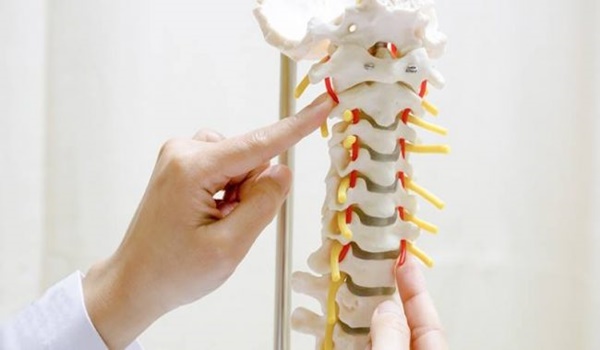The progressive damage of the discs that separate the spinal vertebrae, known as intervertebral disc degeneration, often causes back and neck pain.
Jill PG Urban, from the Laboratory of Physiology, Oxford University, Oxford, UK, explains:
“Back pain is a major public health problem in Western industrialized societies. It causes suffering and distress to patients and their families, and affects a large number of people; the point prevalence rates in a number of studies ranged from 12% to 35%, with around 10% of sufferers becoming chronically disabled.
It also places an enormous economic burden on society; its total cost, including direct medical costs, insurance, lost production, and disability benefits, is estimated at €12 billion per annum in the UK and 1.7% of the gross national product in The Netherlands.
Back pain is strongly associated with degeneration of the intervertebral disc. Disc degeneration, although in many cases asymptomatic, is also associated with sciatica and disc herniation or prolapse. It alters disc height and the mechanics of the rest of the spinal column, possibly adversely affecting the behavior of other spinal structures such as muscles and ligaments.
In the long term, it can lead to spinal stenosis, a major cause of pain and disability in the elderly; its incidence is rising exponentially with current demographic changes and an increased aged population.
Discs degenerate far earlier than do other musculoskeletal tissues; the first unequivocal findings of degeneration in the lumbar discs are seen in the age group 11–16 years. About 20% of people in their teens have discs with mild signs of degeneration; degeneration increases steeply with age, particularly in males, so that around 10% of 50-year-old discs and 60% of 70-year-old discs are severely degenerate.”
Newest multidisciplinary research might solve this issue, with the help of bioengineered discs grown out of a person’s own cells. The common treatments of this problem are limited in terms of the benefits they offer, as they fail to restore the full function of the discs.
However, a team of researchers from the University of Pennsylvania’s Perelman School of Medicine, School of Engineering and Applied Science, and School of Veterinary Medicine believe that they will solve the issue with their bioengineered intervertebral discs made out of our own stem cells.
Stem cells are undifferentiated cells that can “transform” into any specialized cells. These researchers have been working on these models for 15 years, initially in laboratory studies, then in small animal studies, and most recently in large animal studies.
According to Prof. Robert L. Mauck, co-senior author of the current study:
“This is a major step: to grow such a large disc in the lab, to get it into the disc space, and then to have it to start integrating with the surrounding native tissue. That’s very promising. The current standard of care does not actually restore the disc, so our hope with this engineered device is to replace it in a biological, functional way and regain full range of motion.”
The findings of researchers were published in the journal Science Translational Medicine. They tested the new model — called ” endplate-modified DAPS” (eDAPS) — in rats again for up to 20 weeks, and found that it can retain the shape of the disc better, and integrate more easily with the surrounding tissue. Researchers also found that in the rat model, eDAPS effectively restored original disc structure and function.
Afterward, they implanted the device into the cervical spines of goats, and their tests were successful.
The eDAPS integrated well with the surrounding tissue, and the mechanic function of the discs matched and even surpassed, that of the original cervical discs of the goats.
Dr. Harvey E. Smith, the co-senior author of the study, said:
“I think it’s really exciting that we have come this far, from the rat tail all the way up to human-sized implants. When you look at the success in the literature from mechanical devices, I think there is a very good reason to be optimistic that we could reach that same success, if not exceed it with the engineered discs.”
The next step is to conduct extensive trials in goats, which will help them to understand its function better.
To get one step closer, researchers intend to test out eDAPS in models of human intervertebral disc degeneration. Dr. Smith adds:
“There is a lot of desirability to implant a biological device that is made of your own cells. Using a true tissue-engineered motion-preserving replacement device in arthroplasty of this nature is not something we have yet done in orthopedics. I think it would be a paradigm shift for how we really treat these spinal diseases and how we approach motion sparing reconstruction of joints.”


